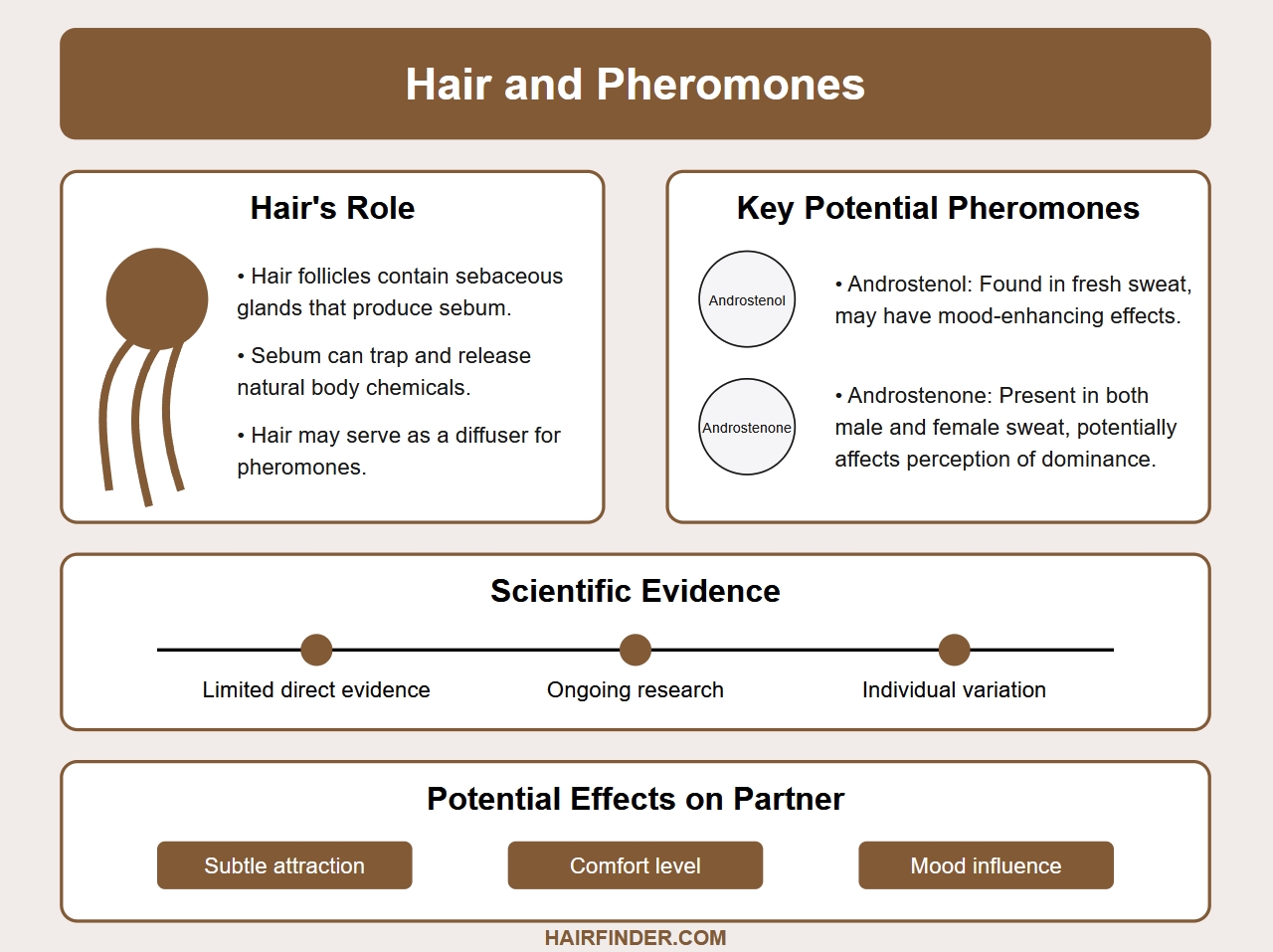Hair and Pheromones

A: Pheromones are chemical compounds released by organisms that trigger social responses in others of the same species. In many animals, these chemical signals influence behaviors like mating, territorial marking, and social bonding. As mammals, humans likely produce pheromones, though scientific evidence remains inconclusive.
Unlike fragrances in hair products, which are artificially added scents, pheromones are naturally occurring biochemical compounds that work on a subconscious level. It’s important to distinguish between the two, as they are two completely different things.
Potential Pheromones in Hair
Several chemical compounds have been studied as potential human pheromones that could be associated with hair:
• Androstenol: Found in fresh sweat, this compound can become trapped in hair. Some research suggests it may have mild mood-enhancing effects.
• Androstenone: Present in both male and female sweat, it may also accumulate in hair. Studies indicate it might influence perceptions of dominance.
• Estratetraenol: A compound derived from estrogen, potentially present in female secretions, which could transfer to hair.
The effects of these compounds on a partner remain subtle and widely debated. Some research suggests that certain natural body scents, including those from hair, might subtly influence attraction by evoking feelings of comfort or familiarity. However, the impact is likely minimal.

The existence of functional human pheromones remains controversial. While the vomeronasal organ -responsible for detecting pheromones in many animals - develops in human fetuses, it’s generally considered non-functional in adults. Instead, humans primarily rely on their main olfactory system (sense of smell) for detecting chemical signals.
Fragrances vs. Natural Hair Pheromones
Pheromones differ from fragrances in hair products, which are designed to produce a noticeable scent that appeals to our conscious sense of smell. In contrast, potential pheromones would operate on a much subtler, unconscious level and be naturally produced by the body rather than artificially added.
Many commercial products claim to contain human pheromones, but scientific support for their effectiveness is limited. These products often include synthetic versions of compounds like androstenone or androstenol, yet there’s little evidence they significantly influence attraction. Any perceived effects may be due to the placebo effect or the confidence boost that comes from believing one is more attractive.

Ultimately, human attraction is shaped by a variety of factors, including visual appeal, voice, personality, and shared values. While natural scent, such as those from hair, may play a minor role in attraction, they are just one small piece of a much larger puzzle.
©Hairfinder.com
See also:
Can a good haircut lead to the production of dopamine?
Why is hair in our food such a big issue?